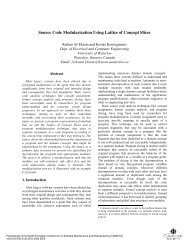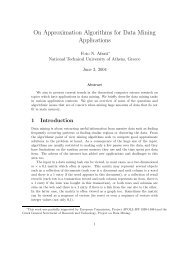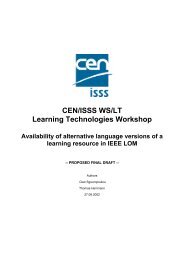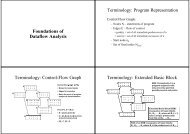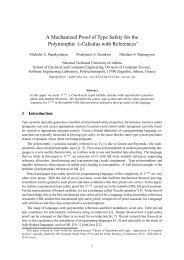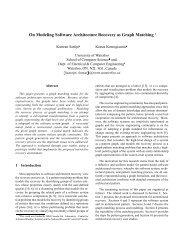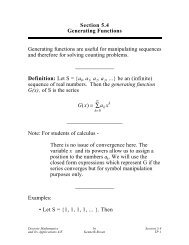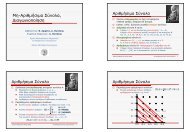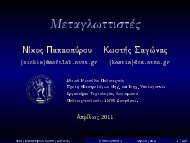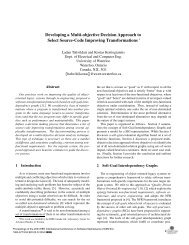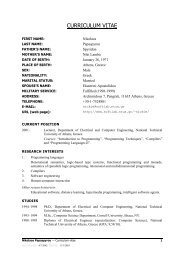Manual
Manual
Manual
You also want an ePaper? Increase the reach of your titles
YUMPU automatically turns print PDFs into web optimized ePapers that Google loves.
Chapter 2: Examples 23<br />
2 Examples<br />
Now we show and explain three sample programs written using Bison: a reverse polish<br />
notation calculator, an algebraic (infix) notation calculator, and a multi-function calculator.<br />
All three have been tested under BSD Unix 4.3; each produces a usable, though limited,<br />
interactive desk-top calculator.<br />
These examples are simple, but Bison grammars for real programming languages are<br />
written the same way. You can copy these examples into a source file to try them.<br />
2.1 Reverse Polish Notation Calculator<br />
The first example is that of a simple double-precision reverse polish notation calculator (a<br />
calculator using postfix operators). This example provides a good starting point, since operator<br />
precedence is not an issue. The second example will illustrate how operator precedence<br />
is handled.<br />
The source code for this calculator is named ‘rpcalc.y’. The ‘.y’ extension is a convention<br />
used for Bison input files.<br />
2.1.1 Declarations for rpcalc<br />
Here are the C and Bison declarations for the reverse polish notation calculator. As in C,<br />
comments are placed between ‘/*...*/’.<br />
/* Reverse polish notation calculator. */<br />
%{<br />
#define YYSTYPE double<br />
#include <br />
int yylex (void);<br />
void yyerror (char const *);<br />
%}<br />
%token NUM<br />
%% /* Grammar rules and actions follow. */<br />
The declarations section (see Section 3.1.1 [The prologue], page 41) contains two preprocessor<br />
directives and two forward declarations.<br />
The #define directive defines the macro YYSTYPE, thus specifying the C data type for<br />
semantic values of both tokens and groupings (see Section 3.5.1 [Data Types of Semantic<br />
Values], page 46). The Bison parser will use whatever type YYSTYPE is defined as; if you don’t<br />
define it, int is the default. Because we specify double, each token and each expression<br />
has an associated value, which is a floating point number.<br />
The #include directive is used to declare the exponentiation function pow.<br />
The forward declarations for yylex and yyerror are needed because the C language<br />
requires that functions be declared before they are used. These functions will be defined in<br />
the epilogue, but the parser calls them so they must be declared in the prologue.



